Description
Product Model: Bently 3500-60 163179-01
- Product Brand / Series: Bently Nevada / 3500 Condition Monitoring
- Module Type: Six-Channel Temperature Monitor (RTD / TC)
- Key Features:
• Six independent channels accepting RTD or thermocouple (TC) input types
• Performs input conditioning, comparison to user-programmed setpoints (alert / danger)
• Offers versions with internal / external terminations, with optional channel isolation for TC to TC protection
• Uses LED status indicators (OK, TX/RX, Bypass) for diagnostics
Applications & Industry Context
In industrial machinery monitoring, temperature is a vital parameter. Monitoring bearing housing temperatures, bearing shells, gearbox temperatures, or auxiliary systems (lubrication, cooling) helps detect early signs of failure. The 3500-60 series modules are the temperature monitors in Bently’s 3500 platform, and 163179-01 is one of the factory ordering codes for such modules.
These modules serve in power plants, petrochemical facilities, pipeline booster stations, compressors, turbines, and other rotating or stationary machinery environments. Because many of those sites have legacy 3500 racks already deployed, adding or replacing a 3500-60 module is a common upgrade or maintenance action.
Unlike dynamic vibration modules, the temperature module is slower in nature but critical for long-term health monitoring. It helps in detecting slow drift, cooling failures, or gradual rising trends even if no immediate vibration fault exists. In redundancy architectures (e.g. triple modular redundant — TMR), the 3500-60 modules play their part in providing high availability.
Because in many systems you may already have spare vibration modules, the temperature module offers a complementary channel of data. Having a reliably functioning 3500-60 163179-01 in your rack enables complete condition monitoring across thermal and dynamic domains.
Product Role & System Fit
The 163179-01 version of the 3500-60 module is a main (monitor) module (not I/O) that occupies a front slot in the rack. It interfaces with I/O modules (which connect to RTD / TC sensors) to gather temperature data.
Key roles:
- The module conditions the inputs it receives (from RTD or TC) via I/O modules and converts them to temperature readings.
- It assesses those readings against configurable thresholds (Alert / Danger) and can route alarms or statuses.
- It communicates with other rack modules for data transfer, configuration, and health status.
- In variant racks, you might pair it with I/O modules offering internal or external terminations, isolation (for thermocouples), barrier options, etc.
Because 3500/60 and 3500/61 share much logic (61 adds recorder outputs), the 3500/60 — such as 163179-01 — is suited where you don’t need analog recorder outputs.
The module is integrated with Bently’s rack configuration software, where you define sensor types, ranges, alarm setpoints, and I/O mappings. After commissioning, it becomes one of the rack’s monitored elements along with vibration, pressure, etc.
Compared to I/O modules that connect sensors, the 163179-01 is part of the logic / processing backbone, so reliability and firmware stability matter strongly.
- 3500-60 163179-01
- 3500-60 163179-01
Technical Features & Benefits
Here are the notable design features and their operational advantages:
Six Independent Temperature Channels
The 3500-60 series, including 163179-01, supports up to six channels of temperature input — for RTDs or thermocouples. This allows consolidating multiple sensor points into one module, saving rack space and wiring.
RTD & Thermocouple Input Support
Users can configure any channel for either RTD (various types) or thermocouple (Type E, K, J, T etc.) inputs. In non-isolated versions, the RTD/TC mix is allowed; in isolated versions, channel-to-channel isolation is offered for TC mode.
Signal Conditioning & Comparison
The module conditions raw sensor signals, applies cold-junction compensation for TCs, filters noise, and compares readings against user-configured alert / danger thresholds. This offloads the host system from low-level signal handling.
Configurable Termination & Barrier Options
Multiple I/O module variants exist: internal or external termination, isolated or non-isolated input versions, and barrier-equipped modules. The 163179-01 specification enables these combinations in the overall system.
Low Power Consumption
The 3500/60 module is modest in power draw, specified at ~7 watts in typical operation. Because it is not a recorder module, it saves power versus 3500/61 variants.
Status / Diagnostics Indicators
Front-panel LEDs include OK, TX/RX (communication status), and Bypass (if the module is bypassed). These assist technicians in quickly diagnosing module health.
Rack & Physical Compatibility
The module is designed to fit in the standard 3500 rack mechanical form factor. It uses standard connectors and adheres to rack slot spacing and inter-module alignment.
Thermal / Environmental Design
The 3500/60 is rated for industrial ambient conditions: operation from –30 °C to +65 °C, storage –40 °C to +85 °C, with humidity, vibration, and EMI tolerances typical of Bently modules.
Ordering & Version Options
The standard part number 163179-01 is the version “without recorders.” The module supports various I/O module types (non-isolated, isolated, internal termination, external termination, barriers) as ordering choices in the 3500 system.
One supplier notes 163179-01 is cataloged as 3500/60-01-00 under the “Temperature Modules” line.
Technical Specifications Table
Here is a summary of key specs gathered from datasheet sources and vendor listings. (Always confirm with original manufacturer documents for production use.)
| Parameter | Specification / Detail |
|---|---|
| Module / Part | Bently 3500-60 163179-01 (Temperature Monitor, no recorder) |
| Function | Six-channel temperature monitoring (RTD / TC) |
| Channels | 1 to 6 channels selectable |
| Input Types | RTD (multiple types) or TC (E, K, J, T, etc.) |
| Input Impedance | ≥ 10 MΩ per lead |
| Power Consumption | ~7 W nominal (for 3500/60) |
| LED Indicators | OK, TX/RX, Bypass |
| Termination / Isolation Options | Internal / External terminations; non-isolated or TC-isolated I/O variants |
| Operating Temperature | –30 °C to +65 °C |
| Storage Temperature | –40 °C to +85 °C |
| Dimensions | Monitor module: 241.3 × 24.4 × 241.8 mm |
| Weight | ~0.91 kg (monitor module) |
| Alarm / Setpoints | User-configurable alert and danger thresholds per channel |
| Wiring / I/O Interface | Uses rear I/O modules; supports internal / external terminations and barrier options |
| Related Modules | 3500/61 variant (with recorder outputs) uses similar input logic but adds 4-20 mA recorders |
Installation & Maintenance Insights
From field experience and best practices, here are notes for working with 163179-01.
Rack & Slot Insertion
Insert the 163179-01 module into its designated front rack slot, ensuring full backplane engagement. Poor seating can disrupt communication or signal paths.
I/O Module Matching & Wiring
Ensure that the I/O modules connected to 3500/60 are correctly matched (termination type, isolation, barrier option) as selected during ordering. Use consistent wiring practice (shielded cables, twisted pairs for RTDs, proper grounding) to minimize noise.
Configuration & Commissioning
Through the 3500 Rack Configuration software, assign each channel to an RTD or TC type, set measurement ranges, define alarm (Alert / Danger) thresholds, and select wiring module types. Validate reading behavior across expected temperature ranges.
LED Checks & Diagnostics
On power-up and runtime, confirm LEDs — the OK LED should light, TX/RX should blink with communication activity, and Bypass LED (if used) signals a bypass condition. An unlit OK may indicate internal fault.
Thermal & Environmental Control
Although temperature modules are low-power, maintain adequate airflow in the rack. Avoid extreme ambient temperatures or proximity to high-heat modules that may stress thermal stability.
Redundancy / TMR Use
If the rack is configured for triple-modular redundancy (TMR), install three 3500/60 modules side by side. Validate voting logic. Ensure that dipswitch or configuration settings reflect the TMR scheme.
Routine Calibration & Verification
Periodically feed known RTD or thermocouple reference signals to each channel to verify linearity and alarm thresholds. Track drift or offset over time.
Spare / Module Readiness
Maintain at least one spare 163179-01 module (same revision), ideally pre-configured or with known baselines, to allow quick swap in case of failure.
Firmware / Software Updates
Although the 3500/60 is primarily analog, ensure that firmware and rack configuration software versions are compatible with the replacement module, especially when crossing minor revisions.

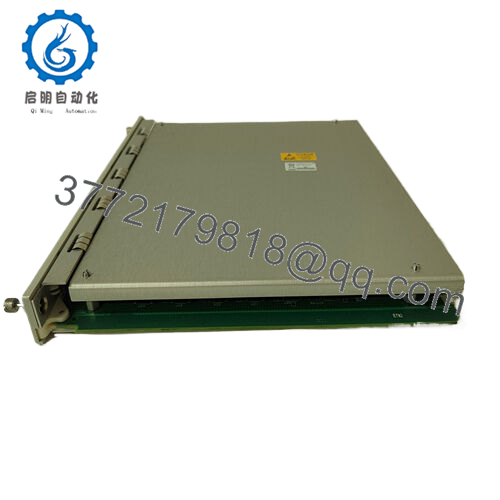
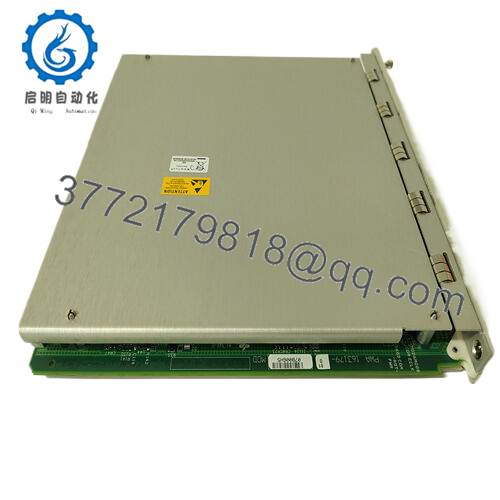
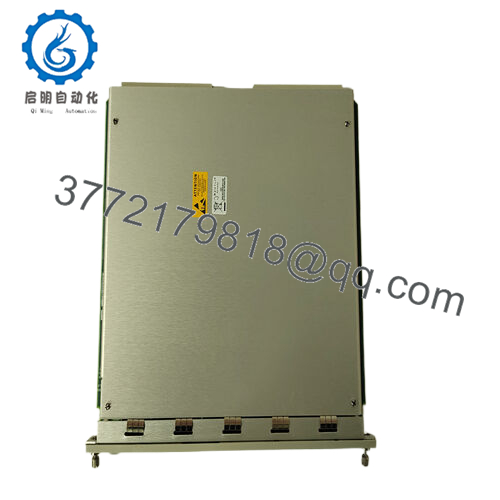
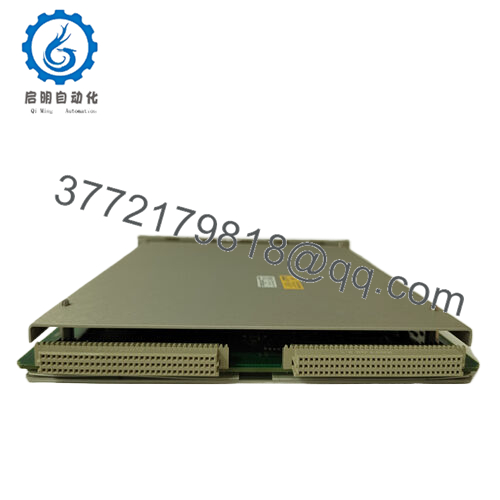
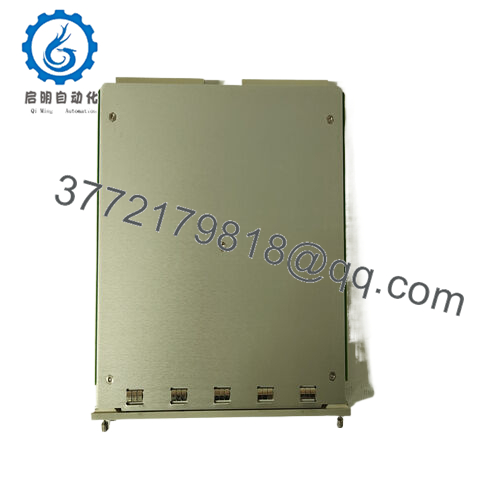
 WhatsApp: +86 16626708626
WhatsApp: +86 16626708626 Email:
Email:  Phone: +86 16626708626
Phone: +86 16626708626


